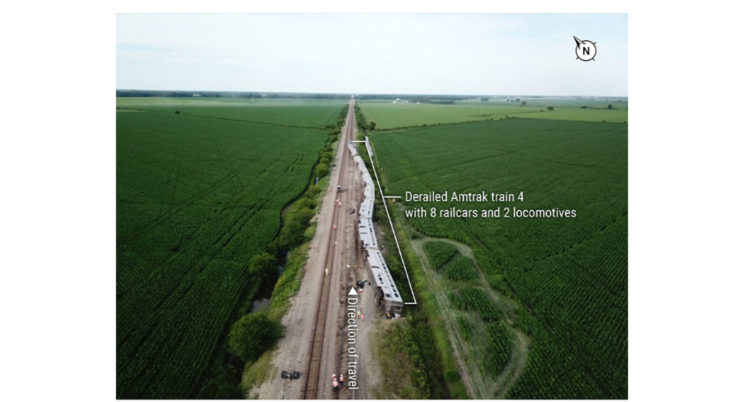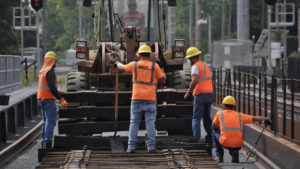NTSB Finds Grade Crossing Design to Blame for Amtrak Collision Last Year
Written by Jennifer McLawhorn, Managing Editor
JEFFERSON CITY, Mo. – The NTSB found the grade crossing design to blame for the collision that occurred last year in Missouri, and Gov. Parson will sign House bill 4 to address passive railroad crossings in the state.
Fox2Now reported Governor Parson will sign a House bill to address passive railroad crossings in the state. “The governor’s office said the state is focusing on 47 crossings on the three rail lines that carry passenger trains in Missouri. “ Once Governor Parson and the MoDOT conduct an independent review, both have stated they would share those results.
About 50% of the over 3,300 public rail crossings have warning lights or gates. Less than 500 are managed by the state. The Missouri Department of Transportation said that out of those, only 22 are passive crossings, or crossings that do not have lights or gates or any other type of warning device.
Separately, out of 2,800 or so crossings that are “managed by individual communities and counties,” about half of those are considered passive by the MoDOT.
An issue with passive crossings and failed grade crossing design comes from a train and truck collision in the state the year previously. Last year, an Amtrak train collided with a dump truck at a crossing in Mendon, Missouri and derailed. Unfortunately, four people were killed with almost 150 injured.
In a news release from the NTSB yesterday, it concluded that the design of the grade crossing was to blame for the collision last year. Because of the “steepness of the road grade and the angle of the intersection at a passive grade crossing,” it led to the dump truck hitting the Amtrak train.
Jennifer Homendy, the NTSB Chair, stated that “every road-rail intersection should have an adequate design to ensure proper visibility so drivers can see oncoming trains.”
In working to find out if the cause of the accident was anything other than crossing design, the NTSB discovered that Amtrak train’s horn was compliant with federal regulations (and was sounded correctly), the driver was not found to be intoxicated, speeding, or using a cell phone, and there was no inclement weather that could have led to such a collision.
In its investigation, the NTSB found that the road grade’s steepness was 13 times the maximum that is recommended by AASHTO, or the American Association of State Highway and Transportation Officials. Moreover, it discovered the angle of the intersection was “30 degrees sharper than the lower limit of the range recommended by AASHTO.” Because of this steepness, it would make it difficult for a truck to come to a complete stop and then accelerate through the crossing.
In response, the MoDOT “will use a portion of the funds out of their latest budget signed by Governor Mike Parson to address passive grade crossings.




